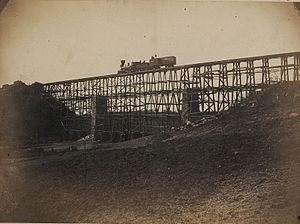Defensive Scheme
A defensive scheme was developed to protect the commonwealth along the Union’s two most likely avenues of advance and lines of communication: (1) Washington-Richmond via the Orange-Alexandria Railroad and Central Virginia Railroad; and (2) Washington-Richmond via the Potomac River and the Richmond, Fredericksburg and Potomac Railroad.
This scheme resulted in the “Potomac Line” between Mount Vernon and Harpers Ferry (to the northwest) and the “Rappahannock Line” from Mount Vernon south along the Potomac to the Rappahannock. Given Washington’s conceptual leadership in post-revolutionary adoption of a Swiss-model for defense, Mount Vernon’s centrality is symbolically noteworthy. In the 1850s, or at least by 1860, a governor’s defense council was established with Francis H. Smith as leader, answering to Governor Henry A. Wise (future Confederate general) and, after 1860, Governor John Letcher (wartime governor 1860-1864). At least by Letcher’s term, a Virginia Secret Service was designed encompassing trans-Potomac actions. It connected spy and sympathizer networks in Washington, Baltimore, Philadelphia and New York (and later to Canada).
The first of Virginia’s “Secret Lines,” a network of safe houses, agents and passage points, was instituted from Stafford County’s Aquia and Potomac Creeks across the Potomac River to Maryland and northward. Virginia’s armaments arsenals were in Harpers Ferry, Richmond and Lexington.

